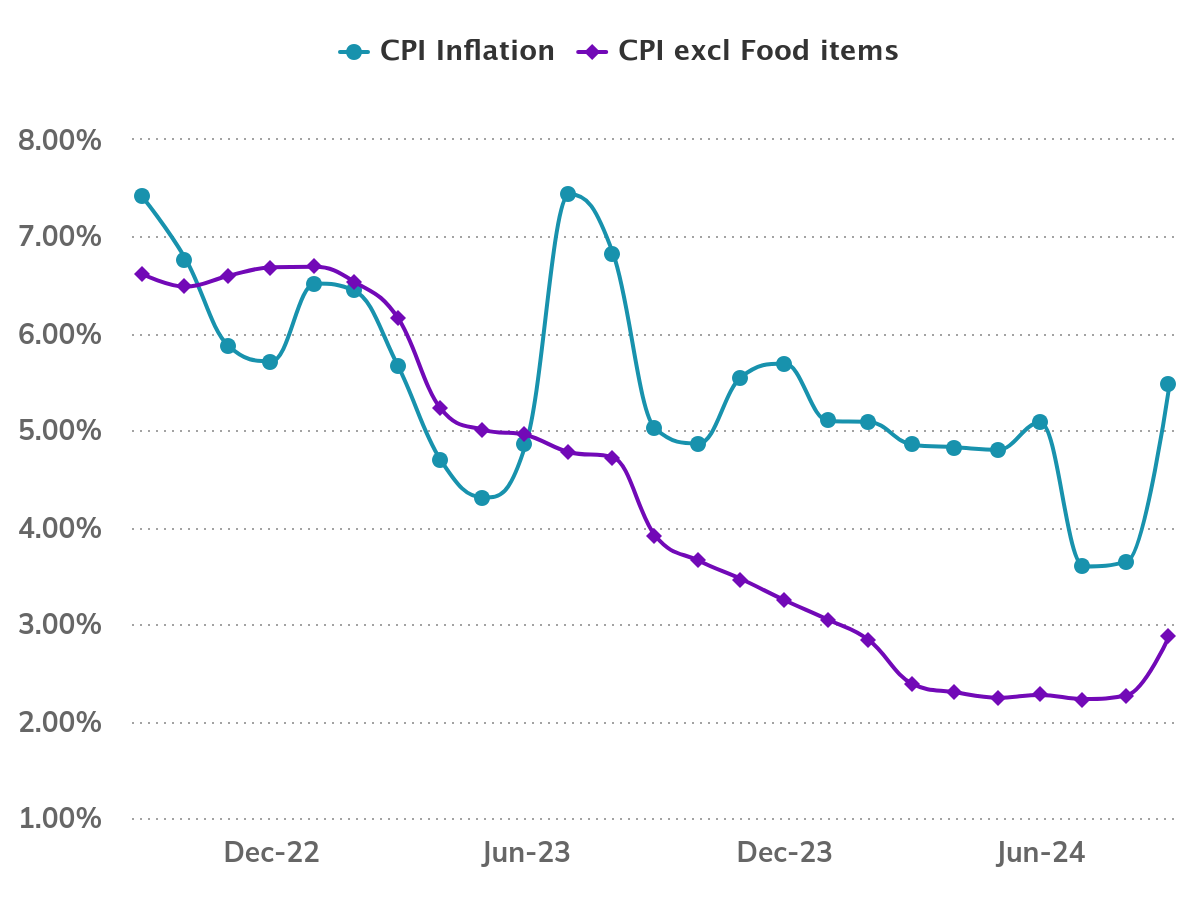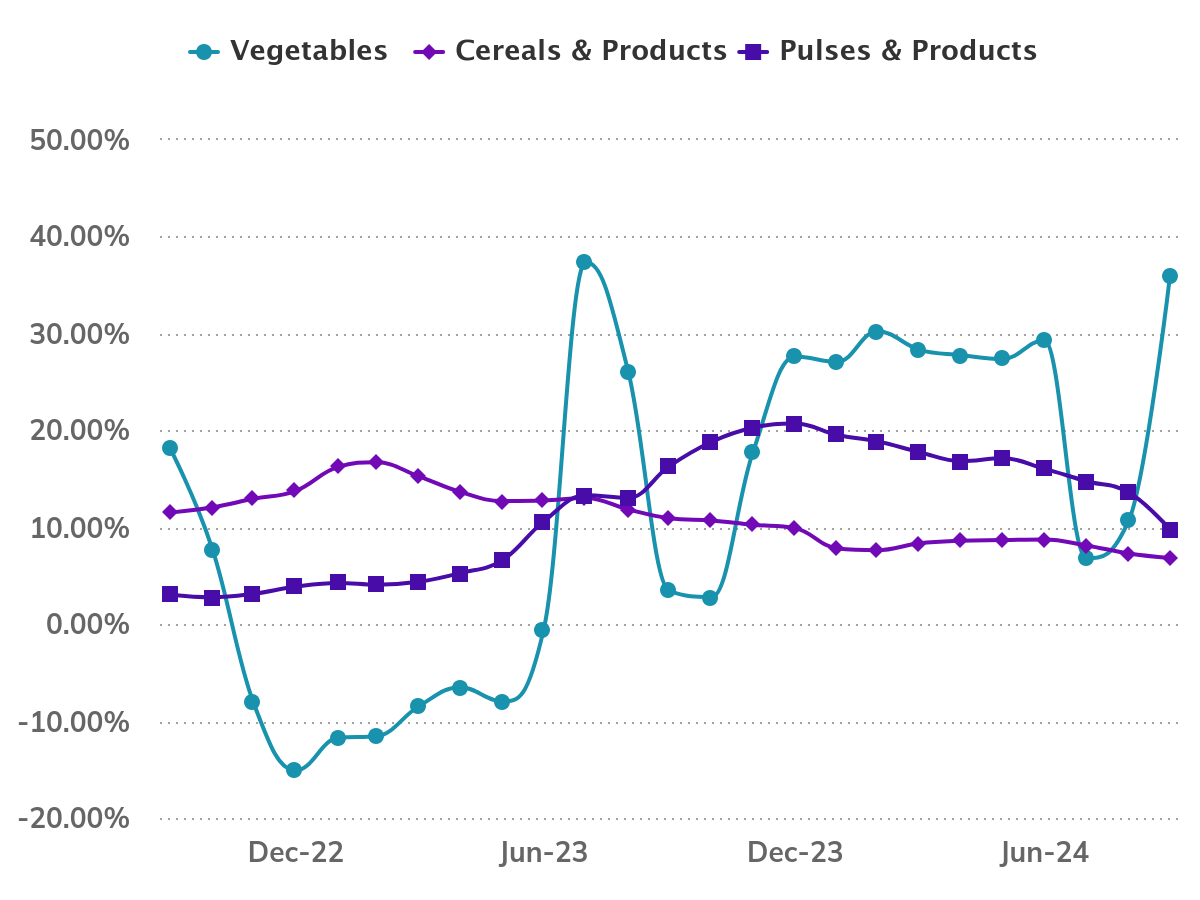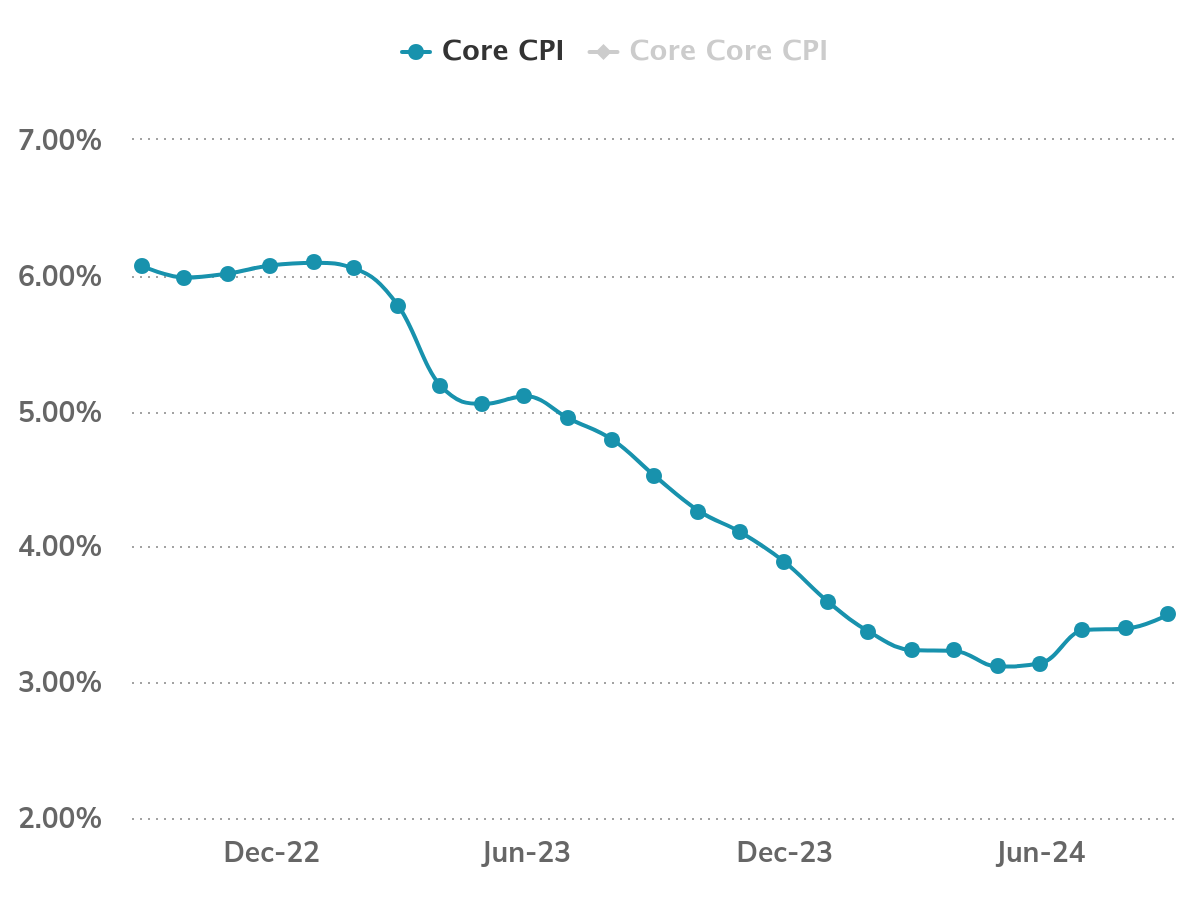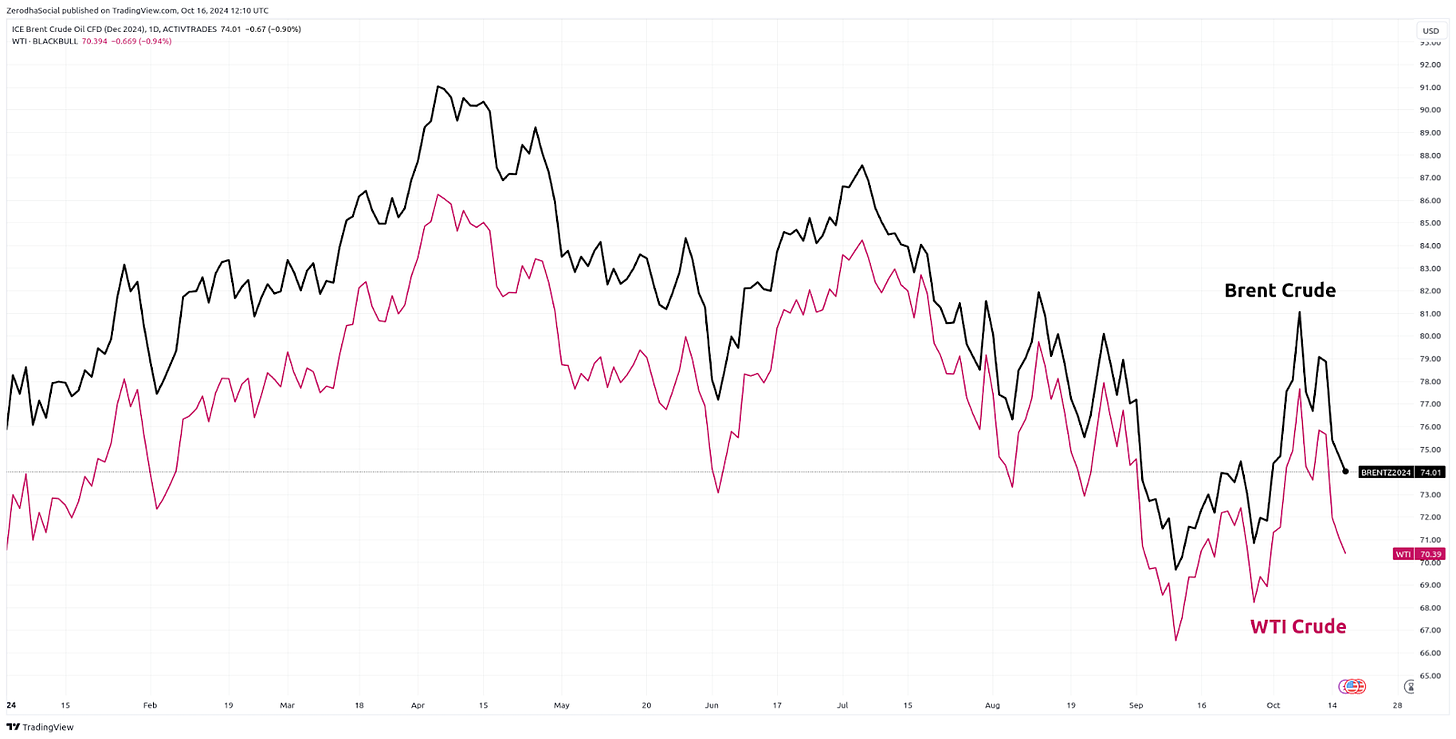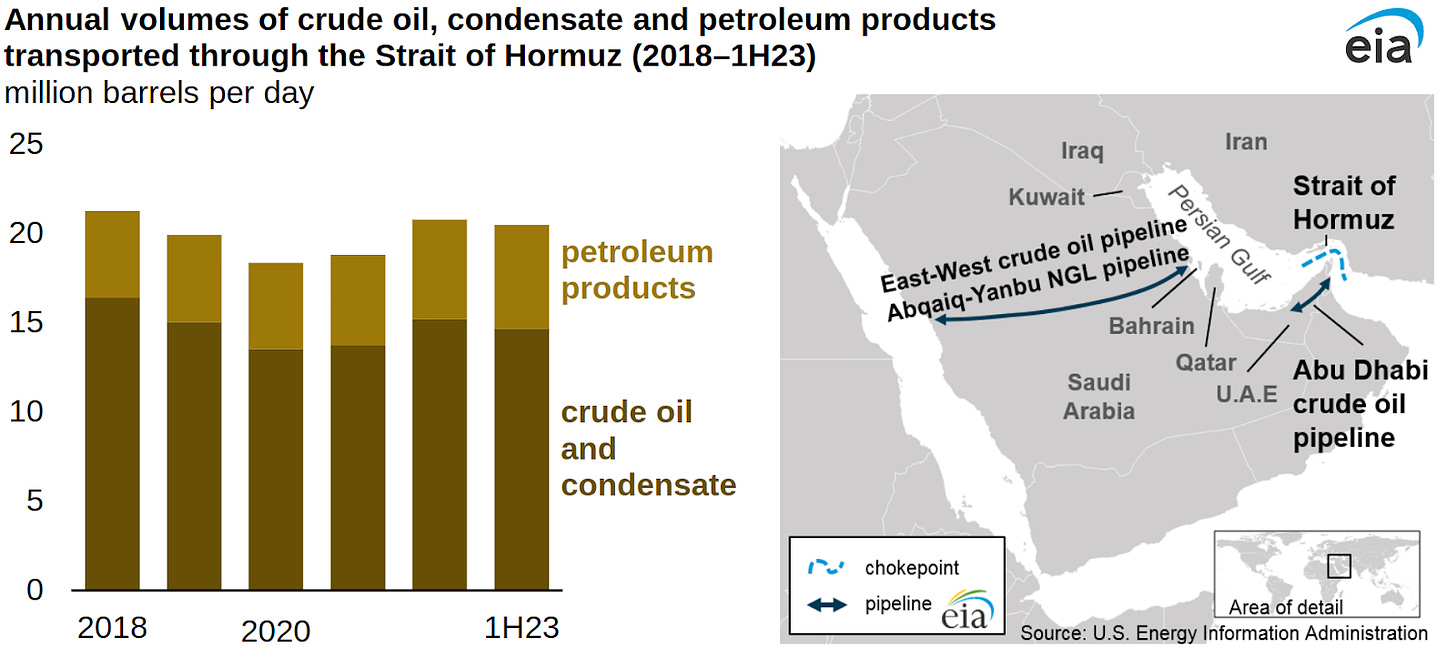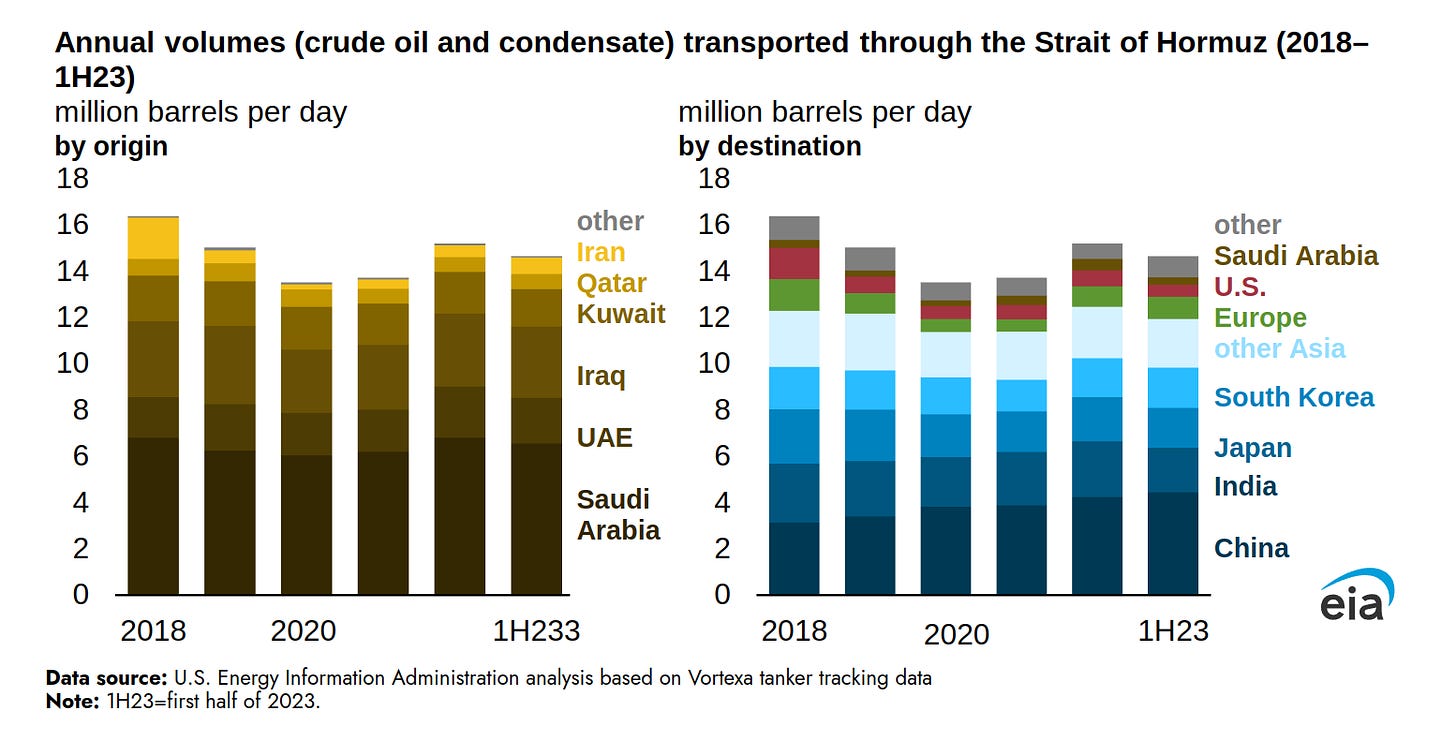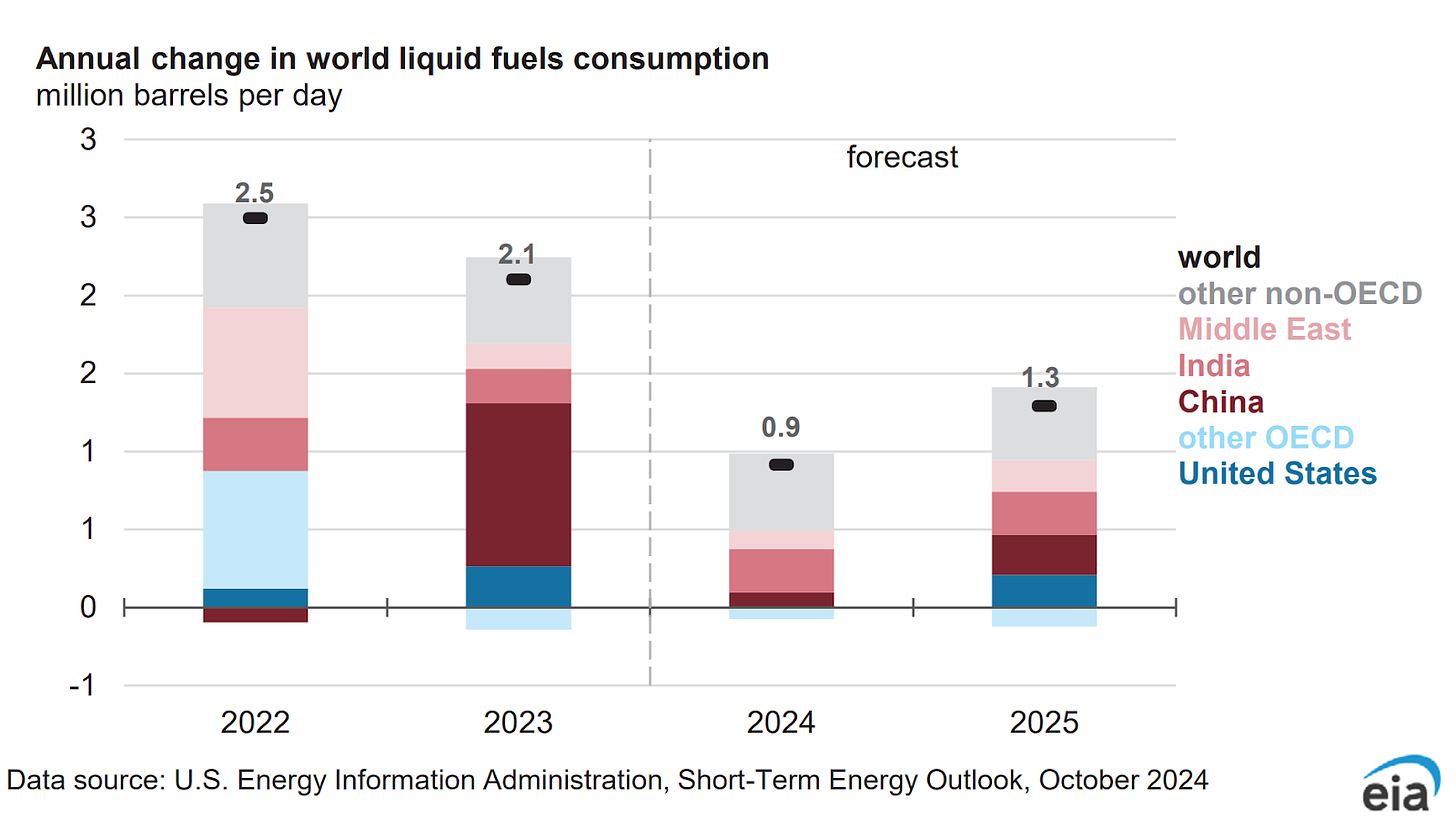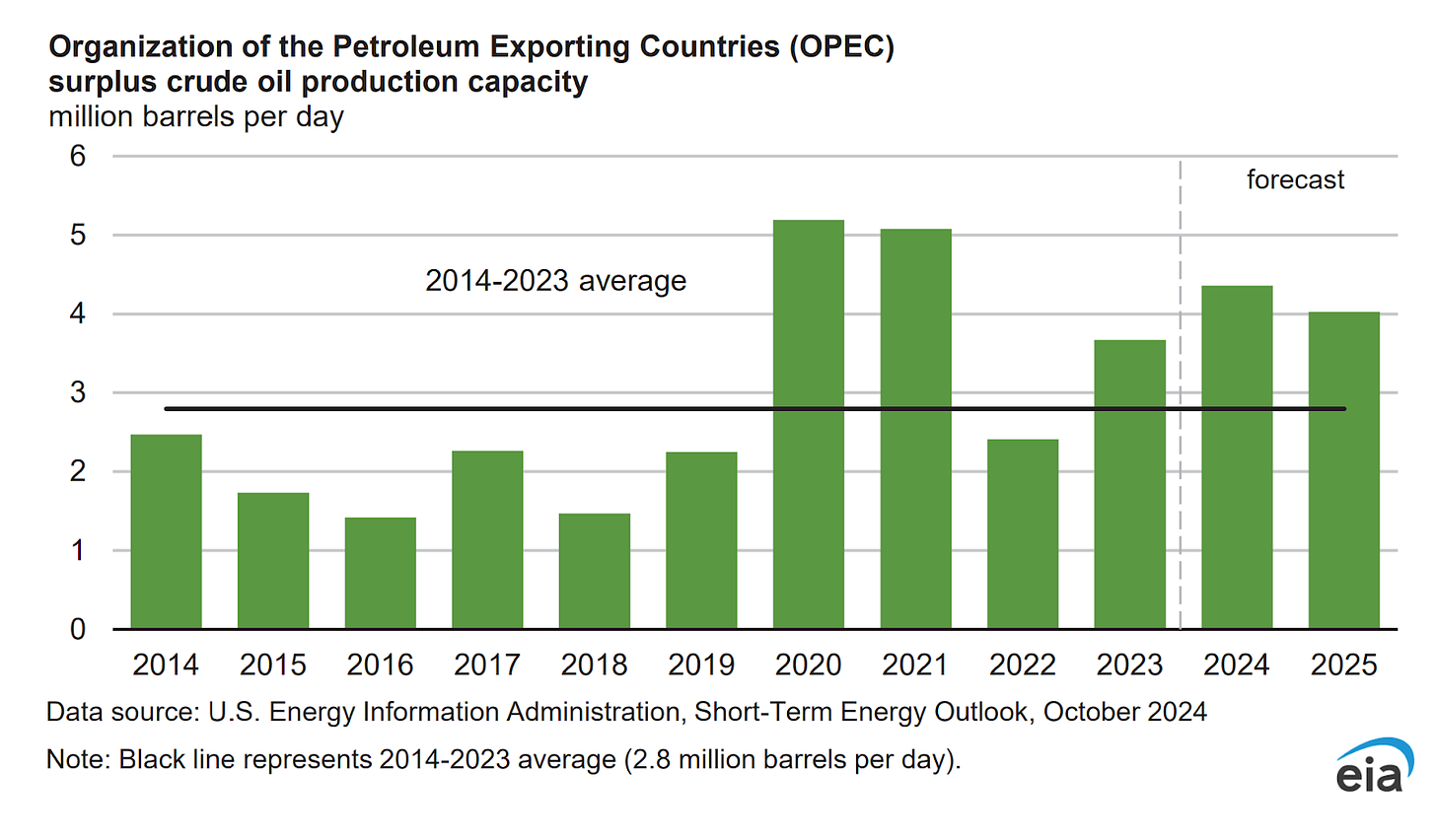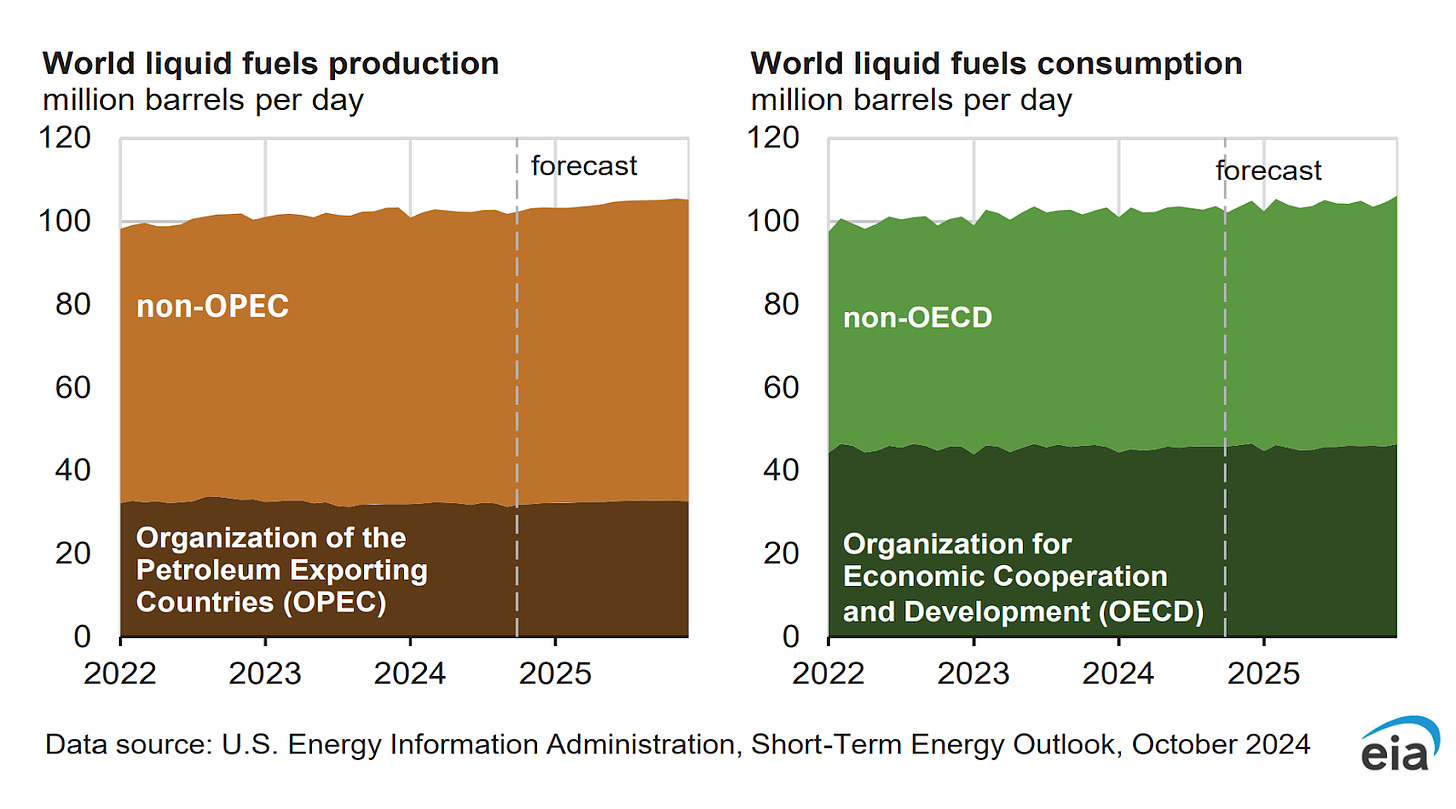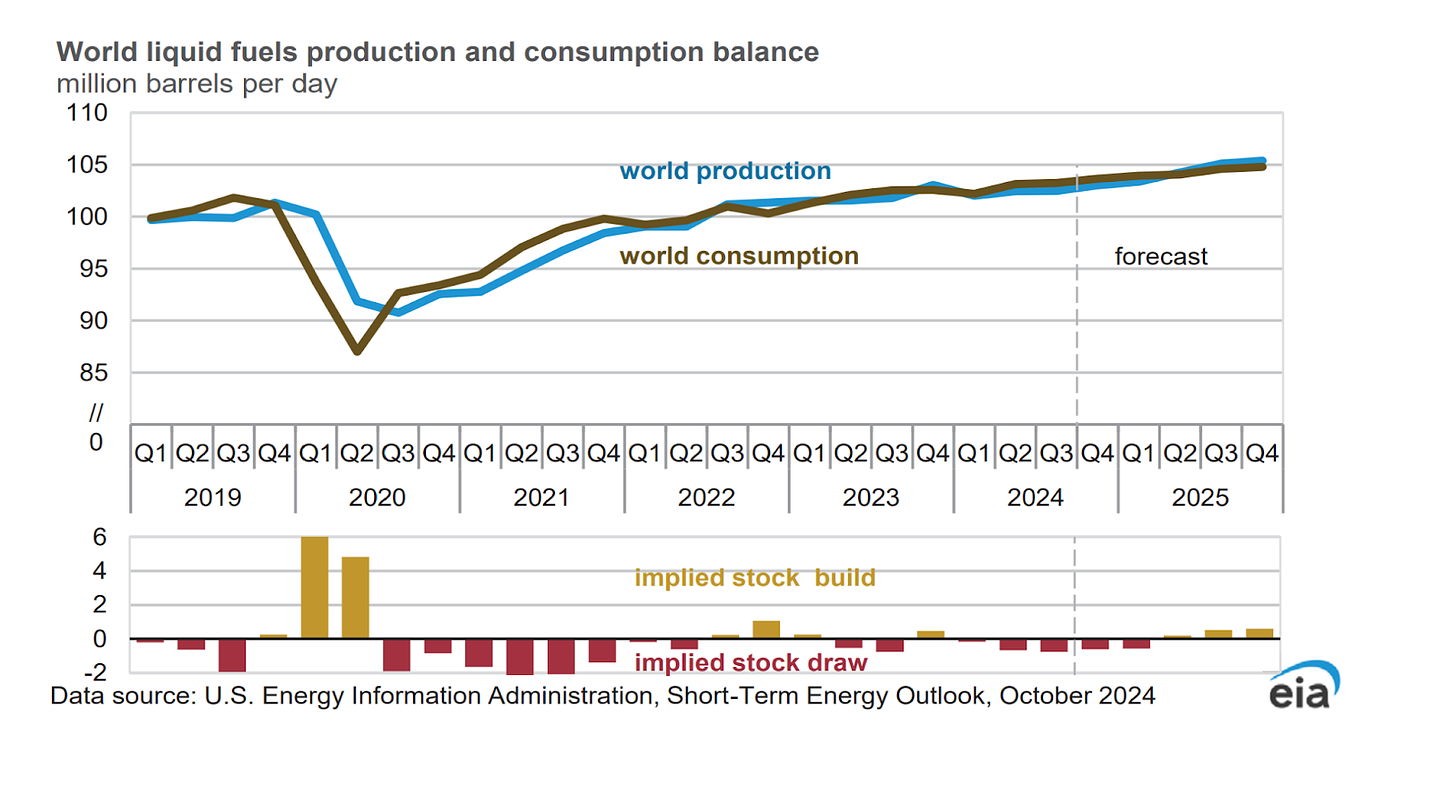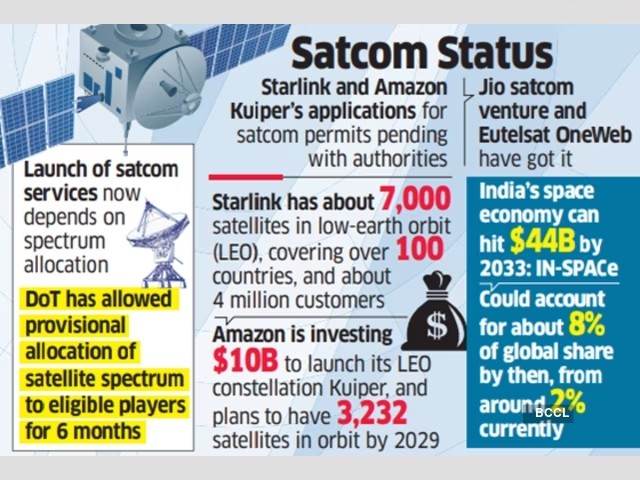Our goal with The Daily Brief is to simplify the biggest stories in the Indian markets and help you understand what they mean. We won’t just tell you what happened, but why and how too. We do this show in both formats: video and audio. This piece curates the stories that we talk about.
You can listen to the podcast on Spotify, Apple Podcasts, or wherever you get your podcasts and videos on YouTube. You can also watch The Daily Brief in Hindi.
Today on The Daily Brief:
- Elon Musk vs Mukesh Ambani. Who’ll win India’s internet war?
- Why are vegetable prices rising?
- Oil Prices Amid Middle East Tensions
Elon Musk vs Mukesh Ambani. Who’ll win India’s internet war?
Recently, India made a big decision about how it will manage the satellite spectrum—a type of radio wave that satellites use to deliver internet services. Instead of auctioning this spectrum (where companies bid to buy rights), the government has chosen to allocate it directly. This means they’ll decide which companies get to use it without a bidding process.
Now, this might sound technical, but it’s a decision that involves billions of dollars in future investments. It has sparked a rivalry between two big names: Mukesh Ambani and Elon Musk!
Here’s what’s happening:
India is expanding its digital reach, especially in areas where traditional cable-based internet—like fiber optics—can’t be easily built. Satellite internet is seen as a solution for connecting rural and remote areas. It can bring the internet to places where laying down physical cables isn’t practical. As this new market takes off, companies are competing to be the ones to deliver internet services through satellites.
One of the major players is Elon Musk’s company, Starlink. They’ve launched thousands of satellites into low-earth orbit and already provide satellite internet in many countries. Musk wants Starlink to be part of India’s digital wave. On the other side, Mukesh Ambani, through Reliance Jio, is also aiming to be a key player in satellite broadband.
Ambani and Reliance Jio are pushing for a spectrum auction because they believe it would be fairer. An auction means companies would bid for spectrum licenses, which could bring in billions for the government. This is how India has usually allocated mobile network spectrum, like for 4G and 5G. Reliance Jio argues that this method levels the playing field, as only companies willing to invest heavily—like them—could enter the market.
On the other hand, Musk’s Starlink prefers that the government allocate the spectrum directly. They argue that globally, satellite broadband spectrum isn’t auctioned, and doing so in India would be an outlier. According to Starlink, satellite spectrum is often shared, unlike mobile networks that need dedicated frequency bands. An auction would make satellite internet more expensive, making it harder for companies like Starlink to offer affordable services in remote areas.
On October 15th, India’s Telecom Minister, Jyotiraditya Scindia, announced that the country would allocate the satellite spectrum directly, without auctions. This decision follows international norms, where most countries don’t auction satellite spectrum. The government believes that auctioning it would put India out of sync with global practices.
Reliance Jio wasn’t happy with this decision. They’ve sent letters to the Telecom Minister and the Telecom Regulatory Authority of India (TRAI), arguing that the decision was rushed and that the whole industry wasn’t consulted. Jio believes that direct allocation will favor global companies like Starlink and Amazon’s Project Kuiper. They argue that these foreign players will get an advantage by not having to go through the costly auction process that Indian telecom companies have faced in the past for mobile networks.
This clash is intense because India’s satellite broadband market is expected to grow at an annual rate of 36%. Revenues could reach $1.9 billion by 2030, making it a lucrative space. For Elon Musk, this decision is key, as it would allow Starlink to roll out its services in India quickly and at a lower cost. Meanwhile, Mukesh Ambani sees this as a challenge to Jio’s dominance in the Indian telecom market. Satellite internet could become a game-changer, expanding services to areas with little or no connectivity.
But here’s the catch: this disruption might take longer than it seems. Starlink, which is already operational in other countries, has a much higher ARPU (Average Revenue Per User) than Indian telecom services. Starlink’s yearly ARPU is around ₹1.5 lakh, while Reliance Jio’s monthly ARPU is about ₹195, which happens to be around ₹2340 per year. Yes, you could say this is an apples-to-oranges comparison because the technology is different, but in a market like India, where affordability drives mass disruption, this price gap is way too large to even consider.
Plus, there are technological challenges. Satellite broadband needs special equipment, like satellite phones, because it operates on higher frequency bands than traditional networks. This means that for most people to use satellite internet, they’d need to buy new devices, making it even pricier.
So, while Starlink could technically start offering services soon, the high costs might limit its reach to a niche market, at least at first. It’s unlikely to become as widespread as previous technologies like 3G and 4G anytime soon.
But with giants like Musk and Ambani going head-to-head, this story is far from over. There will surely be more twists and turns, and we’ll keep you updated on all the latest developments!
Why are vegetable prices rising?
Let’s talk about something that’s affecting all of us, whether we’ve noticed it or not—inflation. In September, inflation in India shot up to 5.5%, compared to just 3.7% in August. That might sound like a small change, but in economic terms, it’s a big jump. When inflation rises this fast, it means the cost of living for everyday people goes up quicker than usual.
Source: IndiaDataHub
So, what’s causing this sudden spike? Let’s break it down in simple terms.
Now, it’s normal for inflation to rise gradually, but the problem comes when it jumps sharply, like from 3.7% to 5.5% in just a month. This catches the attention of economists and policymakers because it means everyday expenses start going up quickly, making life harder, especially for those who are already struggling to make ends meet.
One of the main reasons for this rise in inflation is food. Food inflation jumped to 8.4% in September, compared to 5.3% in August. That’s a steep rise, and when you look closely, vegetables are the biggest culprit. Vegetable prices shot up by a whopping 36% in September, the highest increase in 14 months.
So, if you’ve been to the market recently, you’ve probably noticed that basic ingredients have become a lot more expensive.
Source: IndiaDataHub
But it’s not just vegetables. Fruits have also gotten more expensive, with inflation for fruits hitting 7.6% in September, up from 6.5% in August. Then there’s cooking oil—something many of us use daily. After 19 months of falling prices, they’ve started going up again, with inflation at 2.5%. This change matters because cooking oil prices depend on both what’s happening in India and around the world, especially since India imports a lot of its oil.
Now, while food prices are a big part of the story, there’s another piece we need to look at—something called core inflation. This is inflation without food and fuel prices included because those tend to change more often. Core inflation gives us a better sense of the overall price pressures in the economy. In September, core inflation also went up to 3.5%, the highest it’s been in nine months. One reason for this is the rising cost of personal care products—things like soap, shampoo, and other everyday items. In September, the inflation for personal care products rose to 9%, up from 8% in August.
Source: IndiaDataHub
But the biggest question is—why are food prices, especially vegetables, going up so much? It’s a mix of several reasons:
- Uneven Monsoons: India’s monsoon season plays a huge role in farming, and this year, while overall rainfall was 8% above normal, it wasn’t spread out evenly. Key farming regions like Punjab, Haryana, and parts of Uttar Pradesh and West Bengal didn’t get enough rain when they needed it. This affects crop yields, which means there’s less food available, pushing prices up.
- Extended Monsoon and Pre-Harvest Rains: The monsoon season also lasted longer than expected, and some pre-harvest rains have damaged crops. This is especially worrying for the Kharif crop, which includes pulses (like lentils) and oilseeds. When crops are damaged, farmers have less to sell, and this again drives up prices.
- Global Factors: India imports a lot of its cooking oil, and global prices have been rising. This, along with local issues, is making cooking oil prices climb in India. Plus, global events—like tensions in the Middle East—can create uncertainty in global markets, affecting the prices of many goods, including food.
- Supply Chain Disruptions: We don’t always hear about it, but issues in global and domestic supply chains—how food gets from farms to stores—also play a role in rising prices. If there are delays or bottlenecks, the cost of moving and storing food goes up, and those costs get passed on to us.
So, with inflation rising, what does this mean for the Reserve Bank of India (RBI)?
The RBI is responsible for keeping inflation in check, and it does this mainly by adjusting interest rates. Higher inflation puts the RBI in a tough spot because raising interest rates can help control inflation, but it can also slow down the economy. For now, most experts think the RBI will be careful. They probably won’t lower interest rates until the first half of 2025, unless there’s a major economic slowdown before then.
There is a bit of good news, though. The Kharif harvest—the crops grown during the monsoon season—will start hitting the markets at the end of this month. If the harvest is good, it could help bring food prices down a bit.
But it’s hard to be sure, as unpredictable weather and global issues could still keep prices high. Analysts from financial institutions like Kotak and Bank of Baroda expect inflation to average between 4.5% and 5% for the fiscal year 2025. So, while we might see some relief, inflation isn’t likely to drop significantly anytime soon.
Oil Prices Amid Middle East Tensions
Today, we’re diving into the unpredictable world of oil markets, where geopolitical tensions and shifting demand forecasts are making things complicated for both investors and consumers. We’ll cover three main topics: the recent Middle East tensions and their impact on oil markets, OPEC’s role in managing oil supply, and the different predictions for oil demand and prices.
- Middle East Tensions and the Strait of Hormuz
Let’s start with the recent escalation in the Middle East that has the oil market on edge. On October 1st, Iran launched a large missile and drone attack on Israel, a big move in the ongoing conflict between the two nations. This attack was in response to earlier Israeli strikes that killed senior Hamas and Hezbollah leaders.
Since then, the world has been waiting to see how Israel would respond. Many feared that an Israeli counterattack on Iran’s oil infrastructure or nuclear facilities could lead to a wider regional conflict and disrupt global oil supplies. However, according to a New York Times report, Israel has told the Biden administration it won’t target Iran’s nuclear enrichment or oil production sites in its next move. Instead, Israel plans to focus on military targets in Iran.
A key part of this tension is the Strait of Hormuz, a narrow waterway between Oman and Iran that connects the Persian Gulf with the Gulf of Oman and the Arabian Sea. This strait is the most important passage for oil in the world. According to the U.S. Energy Information Administration, in 2022, about 21 million barrels of oil flowed through the Strait of Hormuz each day, which is roughly 21% of global oil consumption.
To put this in perspective, oil passing through the Strait of Hormuz in 2022 and the first half of 2023 made up more than one-quarter of all the oil traded by sea worldwide. Additionally, around one-fifth of global liquefied natural gas also traveled through the strait in 2022.
Most of this oil heads to Asian markets, with China, India, Japan, and South Korea being the main destinations. These four countries took in 67% of all the crude oil that passed through the strait in 2022 and the first half of 2023.
If this conflict escalated and Iran tried to block the Strait of Hormuz, it would create a major disruption to the global oil supply. While some oil could be rerouted, it wouldn’t be enough to make up for a full closure of the strait.
- OPEC’s Role and Production Capacity
Now, let’s shift to OPEC’s role in all of this. OPEC and its allies, known as OPEC+, have been adjusting oil supply to keep prices stable. Right now, the group has production cuts of about 5.8 million barrels per day in place.
An important point to consider is OPEC’s spare production capacity. According to the EIA’s October 2024 report, OPEC’s spare capacity averaged 4.5 million barrels per day in August and September 2024, with most of this coming from Saudi Arabia and the UAE. The International Energy Agency (IEA) estimates even more, stating that spare capacity exceeded 5 million barrels per day in September, excluding Libya, Iran, and Russia.
This spare capacity is important because it acts as a cushion against possible supply disruptions. If a major disruption occurred, OPEC could increase production to help balance the market. However, using this spare capacity would leave less room to respond to future issues, which could make the market more unstable.
- Oil Price Forecasts and Demand Outlook
Finally, let’s look at what financial institutions and energy experts are saying about future oil prices and demand.
JP Morgan expects Brent crude to average around $80 per barrel in the fourth quarter of 2024, possibly dropping to the low $60s by the end of 2025.
Goldman Sachs, focusing on potential supply problems, suggests Brent could temporarily rise to about $90 per barrel if there’s a disruption of 2 million barrels per day in Iranian supply for six months. In a more extreme scenario, they see Brent possibly reaching the mid-$90s in 2025.
The IEA has a more cautious outlook. They expect global oil demand growth to slow significantly, predicting growth of just under 900,000 barrels per day in 2024 and around 1 million barrels per day in 2025, which is a big drop from the 2 million barrels per day growth seen in 2023.
On the supply side, the IEA notes that non-OPEC+ oil production, led by countries in the Americas, is growing steadily. They expect an increase of around 1.5 million barrels per day this year and next. Most of this growth will come from the United States, Brazil, Guyana, and Canada, which will boost their output by over 1 million barrels per day each year. This increase should be enough to cover the expected rise in global demand.
OPEC, however, is a bit more hopeful. Even though they have lowered their forecast for three straight months, OPEC still expects demand growth of 1.93 million barrels per day in 2024 and 1.64 million in 2025.
The U.S. Energy Information Administration (EIA) falls somewhere in the middle, forecasting global oil consumption to grow by 1.3 million barrels per day in 2025, down from 2.1 million barrels per day growth this year.
These different forecasts reflect varying opinions on key factors like economic growth, the shift to clean energy, and the future of transportation. One big factor is the rapid adoption of electric vehicles, especially in China. The IEA highlights that electric vehicles now make up about 60% of car sales in China.
Even with these factors pushing demand down, geopolitical tensions are still keeping the market nervous. The IEA notes that oil prices rose sharply in early October due to the increasing tensions between Israel and Iran. At the time of their report, Brent crude oil was trading around $78 per barrel, up $8 from the previous month but still more than $10 lower than a year ago.
However, the IEA points out that without a major disruption, the oil market is looking at a large surplus as we head into the new year. They also note that the agency is ready to act if needed, with over 1.2 billion barrels in public reserves and an additional half a billion barrels held by the industry.
In summary, while tensions in the Middle East are keeping uncertainty high in the oil market, the longer-term picture is being shaped by slower demand growth, particularly in China, and the fast adoption of electric vehicles and clean energy. This shift is happening faster in some areas than others, leading to a complicated and sometimes mixed outlook for future oil demand.
Tidbits:
- SEBI has raised the position limits for trading members in index futures and options to ₹7,500 crore or 15% of total open interest (OI), whichever is higher, up from the previous limit of ₹500 crore. This change applies to both client and proprietary trades. The new limits are effective immediately, while updated monitoring systems will be in place starting April 2025.
- India has signed a $4 billion deal with the U.S. to acquire 31 Predator drones, boosting its defense capabilities across the Navy, Air Force, and Army. The deal, which includes a maintenance facility, strengthens India-U.S. defense ties and prepares India for modern drone warfare.
- BlueStone Jewellery is planning a $250 million IPO in mid-2025 after recent funding doubled its valuation to $970 million. The company aims to take advantage of the growing organized jewellery market in India, competing with brands like Melorra.
- Adani Group is investing $3 billion to enter semiconductor manufacturing, with a larger commitment of $7-8 billion by 2027. This investment aims to reduce India’s reliance on imported semiconductors and support key sectors like defense, AI, and automotive.
Thank you for reading. Do share this with your friends and make them as smart as you are ![]()
If you have any feedback, do let us know in the comments

